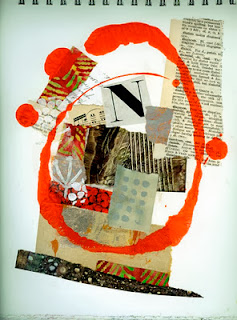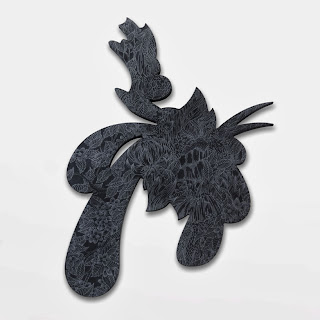Throughout this investigation of
trying to define a sketch, I find that it still remains an open-ended question
with never ending possibility of answers. The very first talk with Professor
Stephen Farthing was incredibly inspirational and it has stayed with me
throughout the search and discovery of what a sketch is. He spoke about sketch
very passionately and presented beautiful sketches from well-known artists. One
particular picture that caught my attention was a quick simple sketch of a dog,
what was so beautiful was the continuous and connecting lines that merely
outlined the shape of a dog resting on the ground. I believe that the beauty of
the sketch was how she was able to capture the dog’s posture, this made me feel
as if I was out in the sun on a summer day enjoying the company of my dog. I
didn’t think that such a simple sketch could take you to a different scene; the
artist may not have intended it that way and only she will know the meaning,
but for me it was a sketch that guided me throughout my journey.
During the weekly sessions there were
specific tasks that linked really closely to sketch. Beginning with, sharing my
sketchbooks to a group of people I didn’t know. It was then I realised how
personal a sketchbook is, a cluster of pages where no judgment or alteration
can be made but yourself. As a group we began to warm up to each other and
started to show our sketchbooks more freely, exchanging personal opinions. I
found this task helpful because of the variety of sketches from peers in graphic
and textile design.
The weekly task I enjoyed the most
was the pecha kucha research presentation from everyone. A 20-slide slideshow
that are shown for only 20 seconds each. I enjoyed this because everyone’s
presentations of innovative and inspirational sketches were so different;
everyone took their own take on it and showed a lot of inspirational sketches
and sketchbooks that I researched and used within my other projects.
There was never a dull moment in
Sketch Innovation, from tasks such as the quick timed sketches to creating our
very own drawing machine I was not expecting such an active and hands on
practice. With all my research into sketching and being able to look at other
people's sketchbooks, has opened my thoughts and ideas. As a interior and
spatial designer student I tend to work in a very mechanical way, my sketches
are very straight to the point and during these session being mixed with
graphic and textile students made me miss the times where my sketches were
playful, colourful and exciting. Personally, I feel sometimes I get lost in all
the technical aspects and lose the playfulness in my sketches, which then
somehow transfers in my projects. I enjoyed these sessions very much and I have
learnt that I shouldn't constrict my ideas, it has impacted the way I work and
I hope to continue to put the ideas in my work of sketching from now on.
"From the age of six I had a mania for drawing the shapes of things. When I was fifty I had published a universe of designs. but all I have done before the the age of seventy is not worth bothering with. At seventy five I’ll have learned something of the pattern of nature, of animals, of plants, of trees, birds, fish and insects. When I am eighty you will see real progress. At ninety I shall have cut my way deeply into the mystery of life itself. At a hundred I shall be a marvelous artist. At a hundred and ten everything I create; a dot, a line, will jump to life as never before. To all of you who are going to live as long as I do, I promise to keep my word. I am writing this in my old age. I used to call myself Hokosai, but today I sign my self ‘The Old Man Mad About Drawing.’"
- Hokusai, The Drawings of Hokosai
















































